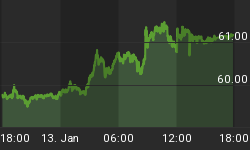On November 7, 2008, Bloomberg LP sued the Federal Reserve Board under terms of the Freedom of Information Act to obtain the names of borrowers of funds from the Federal Reserve as well as lists of the collateral posted by the borrowers. On August 25, 2009, a U.S. District judge ruled in favor of Bloomberg, ordering the Federal Reserve Board to turn over to Bloomberg the requested information within five days. At this writing, the Fed has yet to comply and has yet made a decision to appeal the ruling. The Fed has been reluctant to reveal the names of its borrowers allegedly out of a concern that such a revelation could have an adverse competitive impact on the borrowers.
The reason I bring this up is that it is similar to a situation that arose in 1932 with the Reconstruction Finance Corporation (RFC). The RFC was established by an act of Congress on January 22, 1932, for the purpose of making loans to financial institutions, railroads and to extend credit for crop loans. The Treasury provided some capital to the RFC and the RFC was permitted to borrow from the Treasury. Initially, the RFC granted credit primarily to banks. These loans coincided with a reduction in bank failures and currency held outside the banks declined.
On July 21, 1932, the RFC was authorized to make loans for self-liquidating public works projects, and to states to provide relief and work relief to needy and unemployed people. This legislation also required that the RFC report to Congress, on a monthly basis, the identity of all new borrowers of RFC funds. On orders from the Speaker of the House of Representatives, commencing in August 1932, the names of banks borrowing from the RFC became public information. This publication of the names of banks borrowing from the RFC discouraged current borrowers from continuing their borrowing and prospective borrowers from commencing borrowings out of a fear that depositors would judge this borrowing as a sign of financial weakness. By November 1932, the outstanding amount of RFC loans to banks had decreased.
In mid February of 1933, a Detroit bank began having difficulties. The RFC was willing to lend to this bank, but because of a dispute between one of the Michigan senators and Henry Ford, a large depositor in the bank, the RFC loan was not allowed to be made. A bank panic started in Michigan as a result. This Michigan bank panic served as a catalyst for a nationwide bank panic.
The failure of the Detroit bank was not because the bank was reluctant to borrow from the RFC. But one can only speculate as to whether other banks in Michigan and nationwide were reluctant to borrow from the RFC because their names would have been published. And one can only speculate that if these other banks had willing to borrow from the RFC if a nationwide bank could have been averted.
Today, we have federal deposit insurance. Therefore, the probabilities and magnitude of depositor runs on banks are much reduced compared with 1933. Yet, we can see "runs" by stockholders and other creditors of banks if there is a suspicion of financial problems. If the Fed is required to publish the names of financial institutions to which it has extended credit and this publication induces financial institutions to refrain from borrowing from the Fed, one can only speculate if this would be the tinder for another liquidity conflagration in the coming months.
(Note: The history of the RFC was obtained from http://eh.net/encyclopedia/article/butkiewicz .finance.corp.reconstruction.)
















